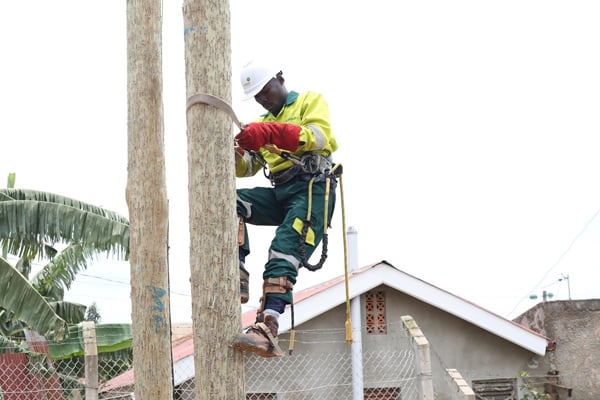Prime
What you should know about procurement fraud

Money on a table. Statistics from the 2016 KPMG Global Profiles of the Fraudster indicate that 62 per cent of fraudsters need to collude in order to circumvent existing controls as compared to the 38 per cent who are working alone. PHOTO BY RACHEL MABALA
What you need to know:
Entities cannot afford to ignore the risk of procurement fraud that not only results in significant business losses, but also reputational damage, Barbara Adibo writes.
If there is one area of fraud that many organizations in Uganda often experience, it is in procurement. Whether you are in the NGO/Aid sector, industry or a commodities trader, it is likely that your business has a separate purchasing function. Procurement entails a significant amount of responsibility. But the duties around this function are frequently misused as an avenue to make ‘quick riches’ at the expense of the organisation.
Irrespective of the organisation’s size, entities cannot afford to ignore the risk of procurement fraud that not only results in significant business losses, but also reputational damage.
Forms
The most common forms of fraud perpetrated by external parties are bid rigging and duplicate/false invoicing, while employees tend to use contract/purchase order variations, kickbacks and conflict of interest. Important to note, is that more external fraudsters are colluding with employees.
Statistics from the 2016 KPMG Global Profiles of the Fraudster indicate that 62 per cent of fraudsters need to collude in order to circumvent existing controls as compared to the 38 per cent who are working alone. Nevertheless, a proactive and simple guide to alleviating the risk of procurement fraud is the use of procurement fraud red flags to detect common procurement fraud schemes before they are manifested.
Amongst these schemes is bid rigging, a form of fraud in which two or more bidders coordinate their bids s to eliminate competition. It may take the form of bid collusion, suppression or rotation. The red flags to note in this scheme include: apparent similarity in the details of bidders such as their addresses; the unsuccessful bidder being subsequently sub-contracted by the winning bidder; a specific vendor consistently submitting winning bids; quoted prices being too close; and the same group of vendors appearing to take turns in submitting winning bids. A case in point was the 2010 World Cup in South Africa in which seven local construction firms secretly met in 2006 to allocate themselves World cup stadiums, and agree on 17.5 per cent profit margins.
During a 2013 commission of enquiry that Murray & Roberts, a renowned South African construction firm, was also involved, the companies suffered huge losses in penalties, in addition to the severe reputation damage.
False invoicing
Another fraudulent practice is duplicate/false invoicing. This involves suppliers re-issuing original invoices to the company for goods and services already supplied or submitting false invoices for goods and services that were never ordered or delivered. Often, these invoices are processed and paid by employees who are colluding with the fraudster in return for a bribe or kickback.
Red-flags for such a scheme include: photocopied invoices, instead of original invoices; vague invoice descriptions; and a lack of supporting documents for payments made against such invoices. Data analytics can be used to identify these invoices by searching for multiple payments to a vendor in the same or similar amounts, or for the same invoice number.
On the other hand, contract and purchase order variations involve the alteration of documents that have already been approved to hide unauthorised costs. This scheme is characterised by poorly drafted and narrow specifications to suit specific vendor capabilities.
Identified red-flags include: unexplained changes in scope; unexplained delays in approval of changes; issue of purchase orders to suppliers as an addendum; variations in the items required and the items actually supplied; and user complaints about the quality and quantity of the goods and services supplied.
Cases of expansion of the scope of Bills of Quantities (BoQs) for ongoing construction projects are examples of this scheme. The widening of the scope will automatically lead to project overruns. Subsequently, the overruns are meant to fund kickbacks to the contractor which will be shared with the employee/s.
Kickbacks
Kickbacks are the most common form of internal procurement fraud around the world. As reflected in the 2015 Corruption Perceptions Index issued by Transparency International, companies lose up to $2 billion of their revenue in bribes and kickbacks every year. These involve the payment of bribes to employees by vendors to influence their choice of bidder.
The potential red-flags to look out for include: a consistent pattern in which one specific supplier wins bids with no apparent competition; close relationships between the vendor and an employee; and a noticeable change in an employee’s lifestyle.
Conflict of interest
Conflict of interest -a scheme that typically involves employees in positions of responsibility abusing their positions to award contracts to suppliers known to them, for personal gain. Common cases of conflict of interest are those in which the employees front for the award of contracts to companies whose owners are their relatives or companies whose ownership is traced back to them. This scheme is more or less similar to the kickback scheme in terms of the red flags. The difference is that this scheme can be prevented by conducting rigorous due diligence on the vendors prior to contracting through background checks.
Despite the high possibility of fraud to occur in the procurement process, there are equally many avenues for proactively circumventing such fraud. These include designing a robust fraud risk management framework, rigorous supplier and employee due diligence, use of a whistleblowing hotline mechanism and spot-check audits.
The author is a procurement specialist with KPMG and a member of the Association of Certified Fraud Examiners (ACFE).
These are the author’s views and do not necessarily represent the views of KPMG.




